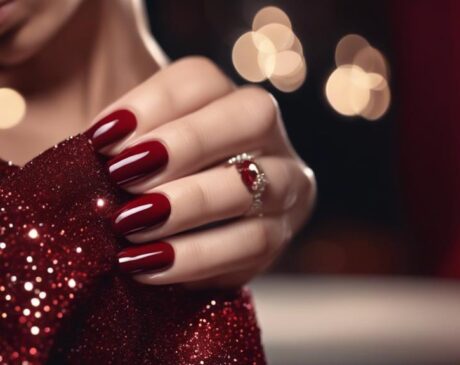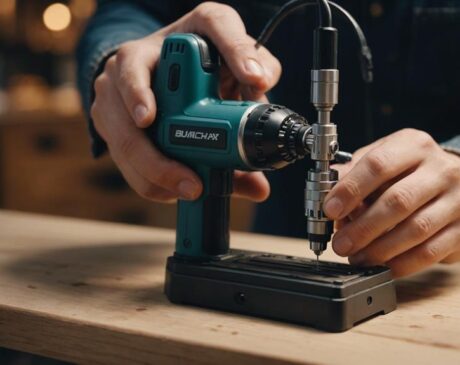What Press on Nails Last the Longest?
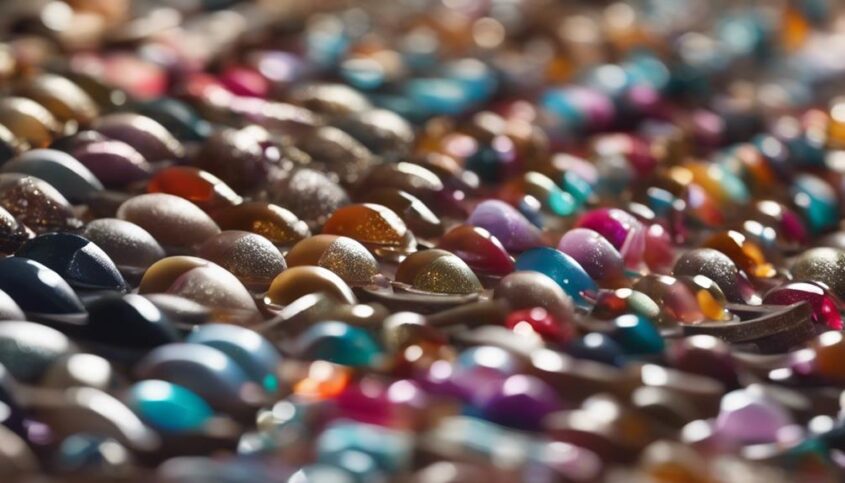
For press-on nails to last the longest, the key factors include using high-quality adhesive, ensuring correct nail size and shape, applying with precision, and selecting durable materials. By focusing on these aspects, you can extend the lifespan of your press-on nails significantly. Consider daily care routines, environmental influences, and proper removal techniques to further enhance longevity. Each of these factors plays a crucial role in determining how long your press-on nails will last. Understanding these elements is essential for achieving the best results with your press-on nail application. More insights await to perfect your press-on nail experience.
Key Takeaways
- High-quality adhesive is crucial for long-lasting wear.
- Proper size and shape prevent premature lifting.
- Healthy natural nails enhance press-on longevity.
- Avoid activities that strain the nails for durability.
- Careful application technique ensures extended wear time.
Factors Affecting Press-On Nail Longevity
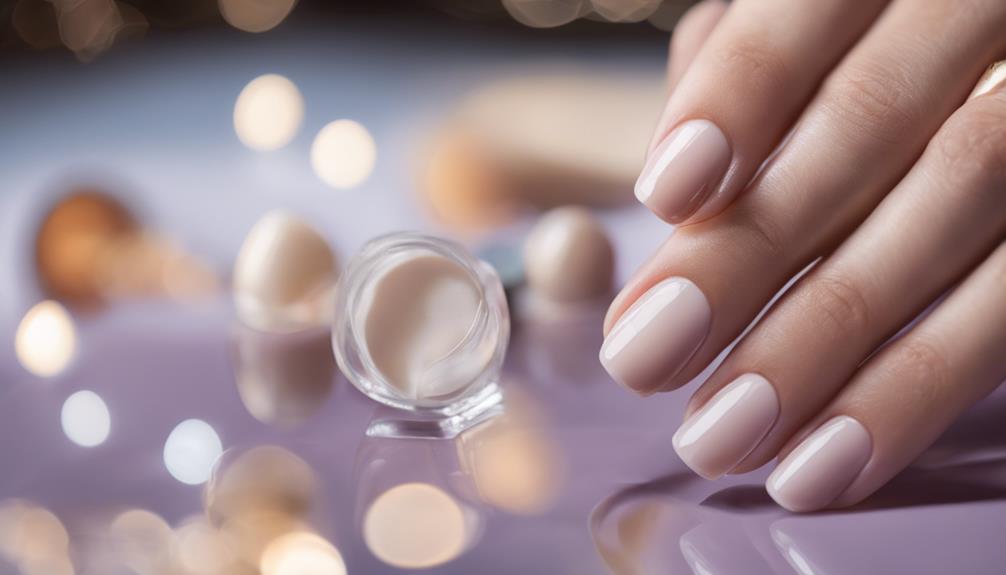
Examining the adherence and maintenance practices is crucial when considering the factors affecting press-on nail longevity. Properly adhered press-on nails are more likely to last longer, as they are less prone to lifting or falling off. Ensuring that the nails are applied correctly, with the appropriate amount of adhesive and pressure, is essential for longevity. Additionally, maintaining the nails by avoiding activities that may put excessive strain on them, such as rigorous handwashing or using harsh chemicals, can contribute to their extended lifespan.
Furthermore, the natural nail condition plays a significant role in how long press-on nails last. Healthy, strong nails provide a better foundation for the press-ons to adhere to, increasing their longevity. On the other hand, brittle or damaged nails may not hold press-ons as securely, leading to premature detachment.
Quality of Adhesive Used
When considering the longevity of press-on nails, the quality of adhesive used is a critical factor that significantly influences their durability and staying power. High-quality adhesives are essential for ensuring that press-on nails stay securely attached for an extended period. The adhesive's strength and longevity play a vital role in preventing the nails from lifting, peeling, or falling off prematurely, which can be frustrating for individuals seeking long-lasting results.
Quality adhesives are designed to withstand various daily activities, such as typing, washing dishes, or styling hair, without losing their grip. They provide a reliable bond between the natural nail and the press-on nail, ensuring a seamless and long-lasting application. Additionally, superior adhesives contribute to the overall comfort and natural look of press-on nails, allowing individuals to wear them confidently without worrying about potential mishaps.
For optimal results and extended wear, choosing press-on nails that come with high-quality adhesive or investing in a reputable adhesive separately is crucial. By prioritizing the quality of adhesive used, individuals can enjoy beautiful, long-lasting press-on nails that enhance their appearance and boost their confidence.
Nail Size and Shape
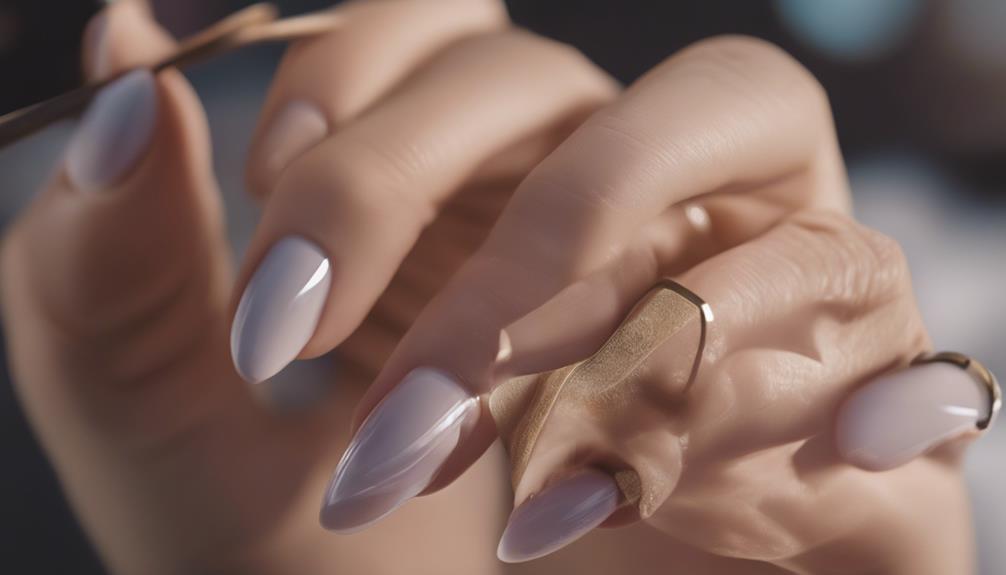
An essential aspect to consider when selecting press-on nails for long-lasting wear is ensuring that the nail size and shape properly align with your natural nails. Choosing the right size and shape is crucial for a comfortable fit and increased durability. Press-on nails that are too small may not cover the entire nail bed, leading to premature lifting and potential breakage. On the other hand, nails that are too large can cause discomfort and may catch on objects, increasing the risk of them getting dislodged.
To determine the correct size, measure the width of your natural nails and compare it to the sizes provided by the press-on nail kit. Additionally, consider the shape of your natural nails – whether they are square, oval, almond, or any other shape – and select press-on nails that closely match this shape for a seamless look and enhanced longevity. By choosing press-on nails that align well with the size and shape of your natural nails, you can significantly extend their wear time and enjoy beautiful nails for longer periods.
Application Technique and Preparation
For optimal results and long-lasting wear, mastering the correct application technique and preparation steps is key when applying press-on nails. To begin, ensure that your natural nails are clean, dry, and free of any oils or residues. Gently push back your cuticles and lightly buff the surface of your nails to create a smooth base for the press-on nails to adhere to. It's important to select press-on nails that properly fit each of your natural nails to prevent premature lifting or damage.
When applying the press-on nails, start by carefully aligning the false nail with your cuticle and firmly press down from the base to the tip to secure it in place. Hold each nail in position for a few seconds to allow the adhesive to bond effectively. Avoid getting your nails wet for at least an hour after application to ensure the adhesive has fully set. Lastly, consider applying a top coat over the press-on nails to provide an extra layer of protection and prolong their wear. Mastering these application techniques and preparation steps will help you achieve a flawless and long-lasting press-on nail look.
Material and Construction of Nails
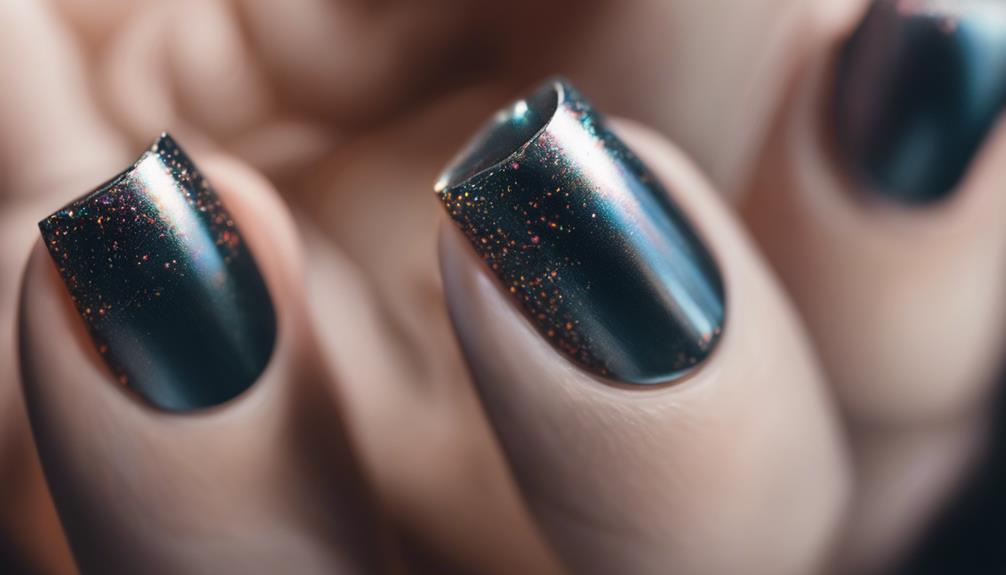
The durability and quality of press-on nails are significantly influenced by the materials used in their construction and the overall design. When considering which press-on nails last the longest, it is essential to pay attention to the following factors:
- Material Quality: High-quality materials such as acrylic, gel, or polygel are more durable and long-lasting compared to cheaper alternatives.
- Nail Thickness: Thicker nails are less likely to bend or break, providing a longer-lasting manicure.
- Adhesive Strength: The adhesive used to attach the press-on nails plays a crucial role in their longevity. Strong adhesive ensures the nails stay in place for an extended period.
- Design and Shape: Well-constructed nails with a proper design and shape are less prone to snagging or lifting, leading to a longer wear time.
Daily Care and Maintenance Routine
Regular maintenance and care practices are essential for ensuring the longevity and quality of press-on nails. To maximize the wear time of your press-on nails, it is crucial to follow a daily care and maintenance routine. Start by avoiding activities that may put unnecessary strain on the nails, such as using them to open cans or packages. Additionally, be mindful of how you use your hands to prevent accidental chipping or lifting of the nails.
It is important to regularly check the nails for any signs of lifting or damage. If you notice any issues, address them promptly to prevent further problems. Avoid exposing the nails to harsh chemicals or excessive moisture, as these can weaken the adhesive and cause the nails to come off prematurely.
Furthermore, gently file the edges of the nails if they start to lift slightly to prevent further peeling. By incorporating these simple daily care practices into your routine, you can help maintain the longevity and durability of your press-on nails, ensuring they look flawless for longer.
Environmental Factors Impacting Wear Time
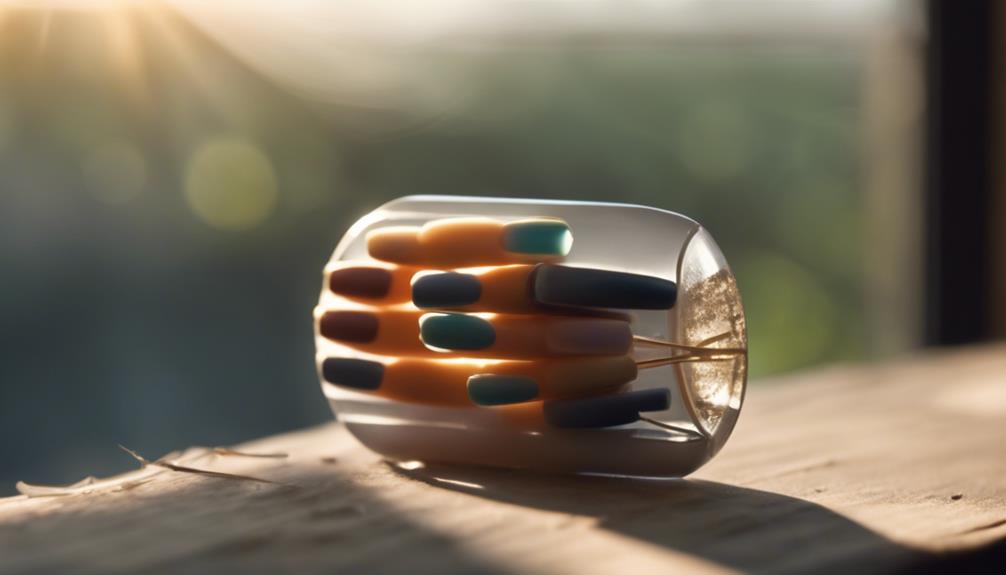
When it comes to the longevity of press-on nails, environmental factors play a crucial role. Changes in climate can impact the adhesive's effectiveness, leading to shorter wear times. Additionally, engaging in activities that put pressure or strain on the nails can also contribute to a shorter lifespan for press-on nails.
Climate's Effect on Wear
In considering the durability of press-on nails, one must account for the significant impact that varying climates can have on their wear time. The climate can affect the adhesive's strength and the nail material's flexibility, ultimately influencing how long the press-on nails will last. Factors such as humidity, temperature, and sunlight exposure all play a role in determining the longevity of press-on nails. Understanding these climate-related factors can help individuals choose the most suitable press-on nails for their specific environmental conditions.
- Humidity Levels: High humidity can weaken the adhesive bond, causing press-on nails to lift sooner.
- Temperature Extremes: Extreme heat or cold can alter the flexibility of the nail, affecting its durability.
- Sunlight Exposure: Prolonged exposure to sunlight can degrade the nail material, leading to quicker wear.
- Climate Adapted Formulations: Some press-on nail brands offer formulations designed to withstand specific climate conditions.
Activities That Shorten Wear
Factors such as physical activities and environmental conditions can significantly impact the wear time of press-on nails. Engaging in activities that involve frequent hand movements, such as typing on keyboards, washing dishes without gloves, or using harsh cleaning chemicals, can accelerate the wear and tear on press-on nails. Additionally, exposure to extreme temperatures, high humidity, or prolonged water contact can weaken the adhesive bond, causing the nails to lift or peel off sooner. To prolong the longevity of press-on nails, it is advisable to wear protective gloves during activities that involve submerging hands in water or using abrasive substances. Being mindful of these environmental factors and adjusting daily routines can help maintain the durability of press-on nails for an extended period.
Removal Process and Tips
When it comes to removing press-on nails, having the right tools and using gentle techniques is essential. The removal process can be made easier by using tools like nail polish remover, cuticle pushers, and acetone. By following proper removal steps and being gentle with the nails, you can ensure a smooth transition back to your natural nails without causing damage.
Removal Tools Needed
Consider utilizing specialized acetone-based solutions to effectively remove long-lasting press-on nails without causing damage to the natural nails underneath. When it comes to removing press-on nails, having the right tools can make the process much easier and safer. Here are some essential tools you may need for removing press-on nails:
- Acetone-based nail polish remover
- Cuticle pusher or orangewood stick
- Cotton balls or pads
- Nail buffer or file
Having these tools on hand will help you safely and efficiently remove your press-on nails without causing harm to your natural nails. Remember to be gentle and patient during the removal process to avoid damaging your nails.
Gentle Removal Techniques
Utilize gentle removal techniques to preserve the health and integrity of your natural nails when taking off long-lasting press-on nails. To ensure a safe and effective removal process, follow these tips:
| Technique | Description | Benefits |
|---|---|---|
| Warm Soapy Water | Soak your nails in warm, soapy water for 10-15 minutes to loosen the adhesive. | Minimizes damage to the nail bed and cuticles. |
| Cuticle Oil | Apply cuticle oil around the edges to help lift the press-on nails gently. | Hydrates the nails and surrounding skin, aiding in a smoother removal. |
| Wooden Cuticle Stick | Use a wooden cuticle stick to gently pry off the press-on nails from the corners. | Reduces the risk of damaging the natural nail underneath. |
Frequently Asked Questions
Can Press-On Nails Be Reused After Removal?
Press-on nails can typically be reused after removal, depending on their condition. Proper care during removal, such as gentle peeling or using nail polish remover, can help preserve the nails for multiple uses.
Are Press-On Nails Safe for Natural Nails?
Press-on nails can be safe for natural nails when applied and removed properly. Minimize damage by avoiding excessive filing or pulling during removal. Ensure nails are clean and dry before application. Follow instructions carefully for best results.
How Do You Prevent Press-On Nails From Lifting?
To prevent press-on nails from lifting, ensure nails are clean and dry before application. Buff nails lightly for better adhesion. Apply glue sparingly and press firmly for several seconds. Avoid excess water exposure and heavy impact on nails.
Can Press-On Nails Withstand Water Exposure?
Press-on nails can withstand water exposure to a certain extent, but prolonged or frequent submersion may weaken the adhesive. It's advisable to minimize water contact and wear protective gloves when engaging in activities that involve water.
Are Press-On Nails Suitable for People With Allergies?
Press-on nails can be suitable for people with allergies as they are typically made from materials like plastic or gel that are less likely to cause reactions. However, individuals with severe allergies should consult a dermatologist.

